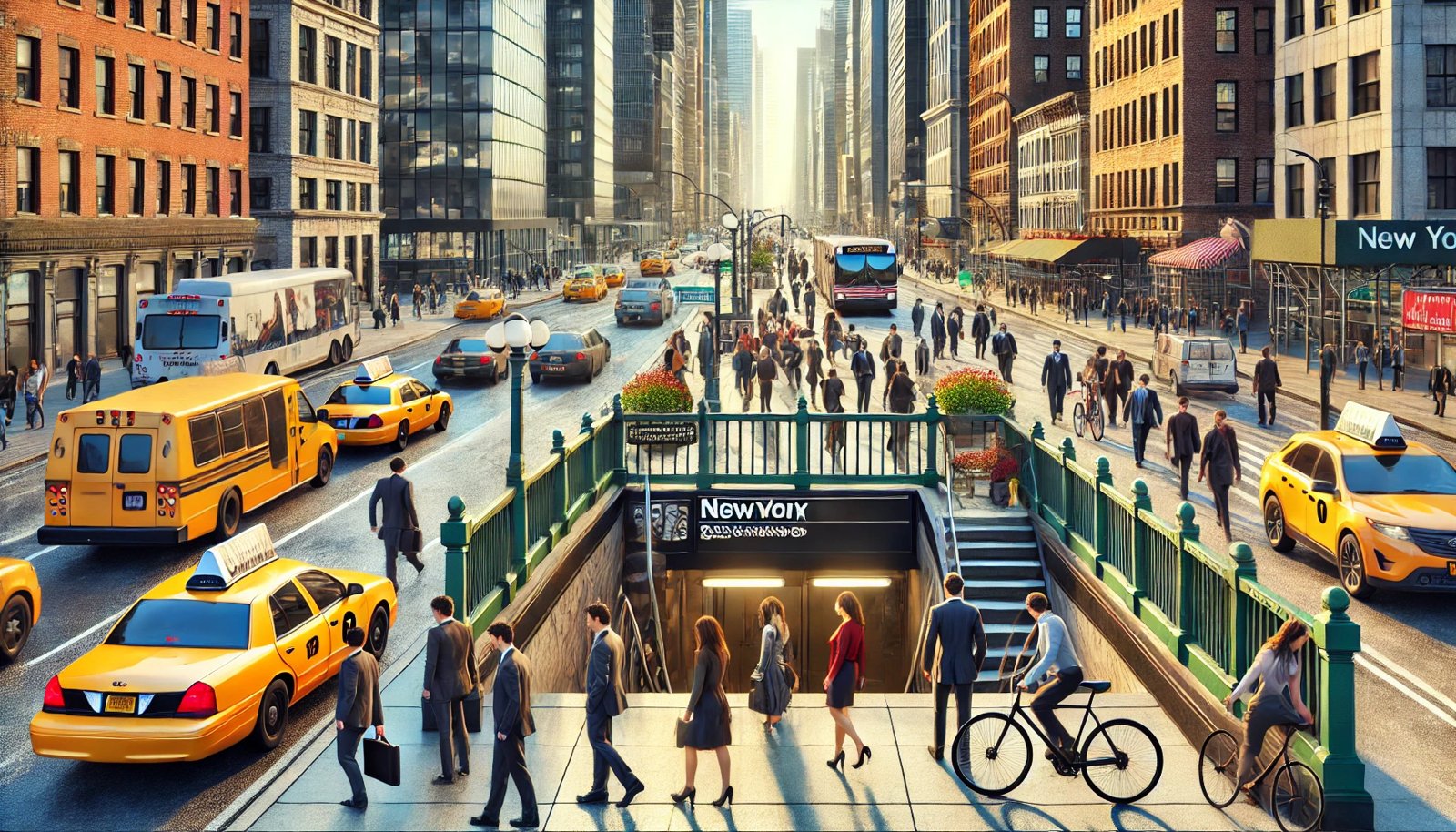How do most New Yorkers get to work?
New York City is a great cultural melting pot and growing economy, with millions of commuters navigating its vast transportation infrastructure each day. Knowing how most New Yorkers get to work will not only reveal the efficiency of this great public transport system but also reveal the unique commuting habits that the urban landscape of New York has influenced. This blog explores the various modes of transport New Yorkers rely on; it explains their advantages, problems, and impact on city life in general.
The Subway System
Clearly, the backbone of New York City's transportation infrastructure is its subway. Operating 24/7, the New York City subway system provides a reliable means for millions to travel across the five boroughs, comprising over 665 miles of track with 472 stations. The New York City subway is one of the largest and busiest subway systems in the world.
Cost-Effective: A single ride costs $2.75, which is relatively cheap for frequent day-to-day ridership. Monthly MetroCards are also useful for people who ride the trains often, with the cost around $121.
Speed and Efficiency: It is often the best way to cross the city since it is often very fast, especially during peak hours. The tickets face more traffic delays on bus or taxi rides. Express trains stop at fewer stations, thus saving time in commuting.
Drawbacks: Despite all its advantages, the subway might be overcrowded at times and sometimes experiences delays due to maintenance issues or even equipment failure. But comparative improvements in the recent past have made it cleaner and safer than the subway of any earlier decade.
Buses
New York City's bus system complements the subway by offering extensive coverage across areas that may not be easily accessible by train. The Metropolitan Transportation Authority (MTA) operates nearly 6,000 buses on over 322 routes.
Accessibility: Buses are particularly useful for cross-town travel or areas outside the subway's reach. They are a comfortable alternative for those who do not like to navigate the underground system.
Cost: Bus rides are also $2.75 per ride, so they fit most commuters' budgets.
Traffic Delays: The only drawback of buses is that they depend on traffic conditions, and during peak hours, the traffic can be extremely heavy. However, the city has implemented certain bus services called SBS, which make fewer stops and provide faster service in crowded areas.
Commuter Trains
Suburban areas, people living outside Manhattan, travel to cities with commuter trains. Services such as the Long Island Rail Road (LIRR), Metro-North Railroad, and NJ Transit connect suburban areas to cities.
Convenience: Such trains allow comfortable rides to commuters traveling from New Jersey or upstate New York. They usually have fewer crowded conditions than in the subways during peak hours.
Cost Factors: Prices depend on distance and the time of day but can be steeper than the subway and bus. However, most commuters are willing to pay that little extra for a more leisurely ride.
Taxis and Ride-Sharing Services
Yellow cabs are a classic NYC mainstay and continue to be popular to cross town quickly. Then, of course, there is the rise of ride-sharing options such as Uber and Lyft, which have started trending sharply in recent years.
Availability: Taxis are widely accessible in Manhattan. A person can hail one from the street, or use apps to book them. Ride-sharing services can be summoned wherever in the city.
Cost Factors: Taxis charge on a meter. Ride-sharing services have prices based on supply and demand. Both taxi and ride-sharing services get costly during peak hours and long-distance rides.
Ferries
Ferries also offer a very scenic commute for passengers who take the ferry to get to work from areas such as Staten Island or otherwise across the East River to Manhattan.
Special Experience: The free Staten Island Ferry affords spectacular views of the Statue of Liberty and skyline of Manhattan, which are a favorite among locals and tourists alike.
Time-saving: For certain directions, ferries may be faster than driving or public transportation because there are fewer traffic controls on waterways.
Walking and Cycling
As NYC is so compactly designed, most walk or cycle for relatively short distances.
Healthful: Walking promotes the physical wellbeing of walkers while being able to appreciate the vibrant streetscapes of the city.
Bike Sharing Programs: Citi Bike offers a bike-sharing program that enables users to rent bikes at various docking stations throughout the city, providing an eco-friendly commuting option.
Commuting Options
Navigating New York City's transportation system requires adaptability and awareness of various commuting options available to residents. Whether relying on subways, buses, commuter trains, taxis, ferries, or even walking and biking, each mode has its unique benefits and challenges that contribute to the city's dynamic commuting culture.
As you go through your daily commute in this busier metropolis, think about how a tidy living space serviced by Sparkly Maid NYC can improve productivity and well-being. Living in a clean space supports your hectic lifestyle in the world's most competitive job market while allowing you to concentrate on what matters most—your career goals.
